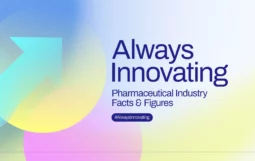Patient Centricity is Essential to Modern Day Drug Development
Providing new therapies to patients living with unmet needs faster and more efficiently is an industry-wide challenge. A major key to improving the speed cost and quality of drug development is harnessing the insights of the customer – patients themselves.
The traditional model of clinical development has looked at drug development through the lens of a scientist, often primarily focused on a mechanism of action and subsequent clinical endpoints. This model has resulted in larger, longer and more expensive trials. What we are just beginning to understand is how to identify, target and develop in a manner that can most profoundly impact patients and their day to day lives, which may or may not be related to the clinical endpoint. To better design our trials, research questions and the outcomes studied must be prioritized by patients. To more efficiently recruit, retain and ultimately deliver clinical trials we must understand the patient perspective. Finally, to better characterize the benefits and risks of our products for health authorities, we must understand how patients’ perceive the burden of the disease and the standard of care. Patients play the most important role in clinical trials, and therefore are in a position to help make a difference.
Successful clinical development will be found at the intersection of great science and patient centricity.
Merck Serono has chosen to engage with patients and patient advocacy groups during clinical development through a focus group approach. Patients in the focus group represent a cross section of patients living with the disease. Patients afflicted with life-threatening diseases are often motivated by the knowledge that they are making a difference for people with the same condition. Taking this focus group approach allows us to understand the needs and wants of the patients when it comes to clinical trial design, inclusion/exclusion criteria as well as day to day study impact on patients (e.g. site selection, scheduling, etc). Such an approach allows us to learn the individual needs and motivations by region in a given therapeutic area and then incorporate in our clinical trial designs.
This type of patient centricity is only the beginning. New technologies will eventually make it possible to isolate the patients for whom the drug in development will work. This will be a paradigm shift in the way clinical development is conducted. Patient centricity will give way to “individual centric” clinical trials with the development of and proliferation of predictive biomarkers and tumor profiling through the collection and testing of cancer cells to determine their molecular and genetic signatures at tumor banks. Predictive biomarker data along with information collected on the tumor can then be applied to determine the best possible treatment that works with the specific type of cancer cell leading to stratified medicine which can, in fact, replace the clinical development model that is in place today. New technologies have the potential to drastically reduce the number of patients required to participate in clinical trials, making it possible to have trials tailored to individuals. Ultimately, patient centricity will lead to a more accurate diagnosis, and better treatment selection, which has a much greater potential for a successful outcome for patients.
I am an academic researcher by background, and helping people with unmet needs has always been my main driver. Working with patients directly to improve how clinical trials are run is another way to be closer to the patient and understand their needs to help design the best possible therapy. As an industry, we cannot assume we know what patients need – we need to involve their voice in our efforts. Clinical development that is built on solid science and supported by principles of patient centricity, which includes simplicity of execution, is likely to lead to getting new therapies to patients in need sooner. That is what the scientists and researchers are looking for: science that can be translated into potential new medicines to serve the patients in need.
To learn more about our R&D strategy, please visit biopharma.merckgroup.com .
Author


